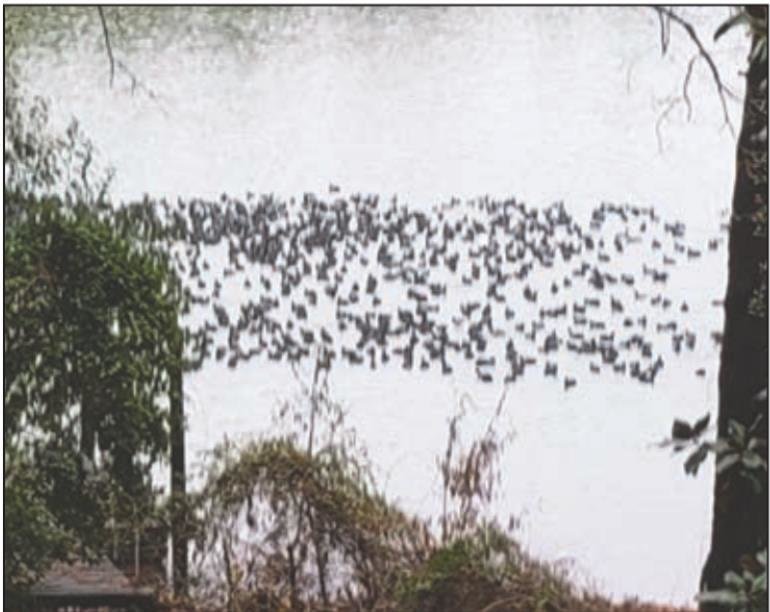Life on the wild side Ducks have it made
U nless you live on Lake Murray or a large pond, you may not know that hundreds of ducks are here.
Our mild winter may have kept more of them here than flying farther south. The ducks like our …
This item is available in full to subscribers.
Subscribe to continue reading. Already a subscriber? Sign in
Get 50% of all subscriptions for a limited time. Subscribe today.
Please log in to continueNeed an account?
|
Life on the wild side Ducks have it made
Unless you live on Lake Murray or a large pond, you may not know that hundreds of ducks are here.
Our mild winter may have kept more of them here than flying farther south. The ducks like our county and its weather here between the Appalachian Mountains and the Atlantic Ocean.
Our family is fortunate. We can sit on our deck or walk down to the water and see hundreds of ducks and geese.
Some are permanent residents. We saw many of them headed south in October and November. Now they are headed north for their summer homes on which they pay no property taxes and eat what they want without any sales taxes.
Makes you feel great to be a taxpayer.
More than 20 species pass through here from September to March.
A resident species never leaves.
Ornithologists have identified 5 primary groups: dabbling ducks, perching ducks and 3 types of diving ducks — sea ducks, bay ducks and stiff-tail ducks.
• Dabbling ducks – also known as puddle ducks – are named for showing their rears when they feed. The most common species include mallards, green-and blue-wing teals, northern shovelers, northern pintails, American widgeons and gadwalls.
Dabbling ducks eat different foods so many species share feeding areas.
• Perching ducks nest and roost in trees. These species’ webbed feet make them capable swimmers and 3 small claws on their feet help them climb trees.
Wood ducks are our only perching duck species and only year-round residents.
When not feeding in the water, wood ducks eat acorns and berries.
• Our sea ducks are black and surf scoters, buffleheads, golden eyes, common eiders, harlequins, long-tail ducks and mergansers. Buffleheads and golden eyes are related with large, flamboyant heads.
Mergansers are predatory diving ducks that catch fish with their serrated bills.
• Common bay ducks or pochards include canvasbacks, redheads, lesser and greater scaups and ring-necked ducks.
Like other diving ducks, bay ducks’ legs are in the rear rather than in the middle.
Unlike greater scaups, the handsome red-head lesser scaups like freshwater.
Rather than building their own, they of ten deposit eggs in other ducks’ nests.
• Ruddy duck males have pale blue bills, brown bodies and white cheek patches.
Ruddy ducks arrive in December and stay until March. Most of them feed at night by foraging for underwater insect larvae.
My father used to say that if there was anything to reincarnation, he wanted to come back as a rich man’s hunting dog.
You slept by the fire, were well fed and only had to work a few days a year, fetching birds the boss shot on the wing.
Being a vagabond at heart, I’d rather come back as a non-taxpaying duck, flying wherever I want, to Florida in winter and Canada in summer where everything is taxfree, a socialist paradise.
Next: Your life story
Like what you just read?
Inspire yourself or a loved one with a personally-autographed copy of Your Life’s Great Purpose by Jerry Bellune for only $20. Call 359-7633.
Other items that may interest you










Comments
No comments on this item Please log in to comment by clicking here